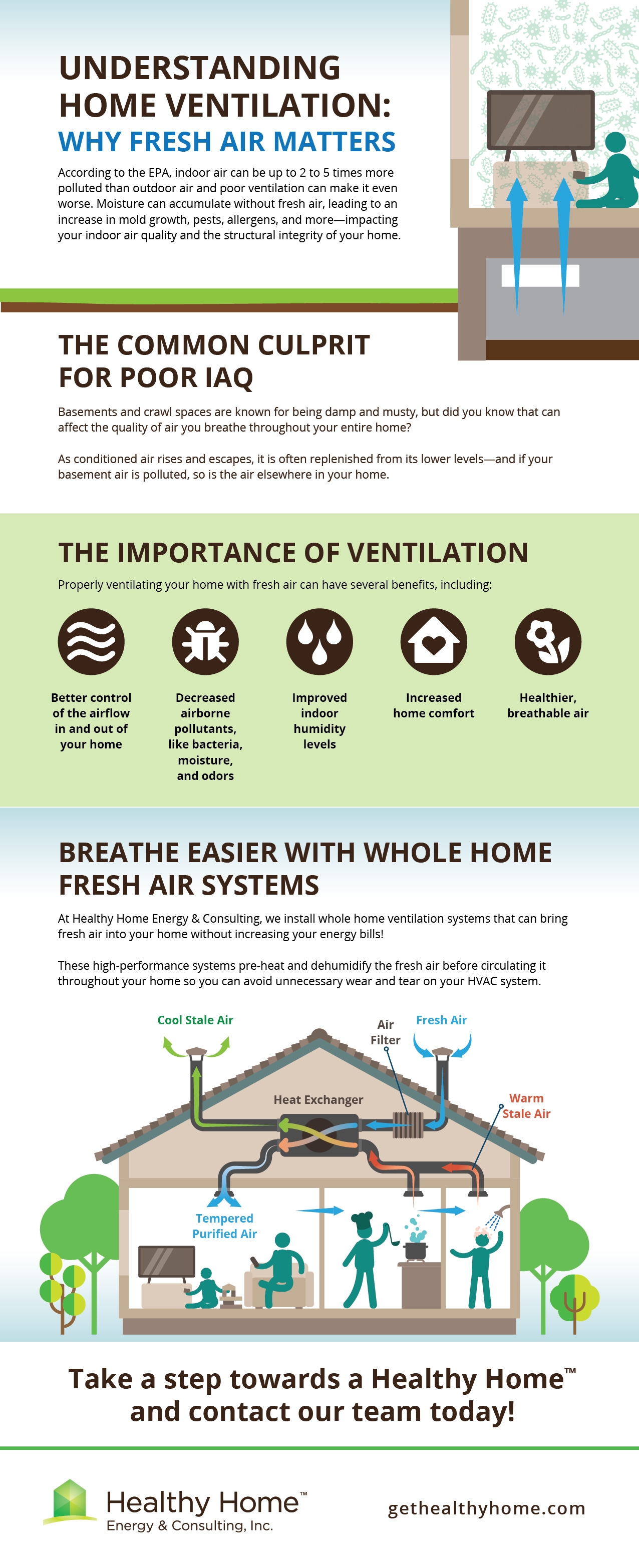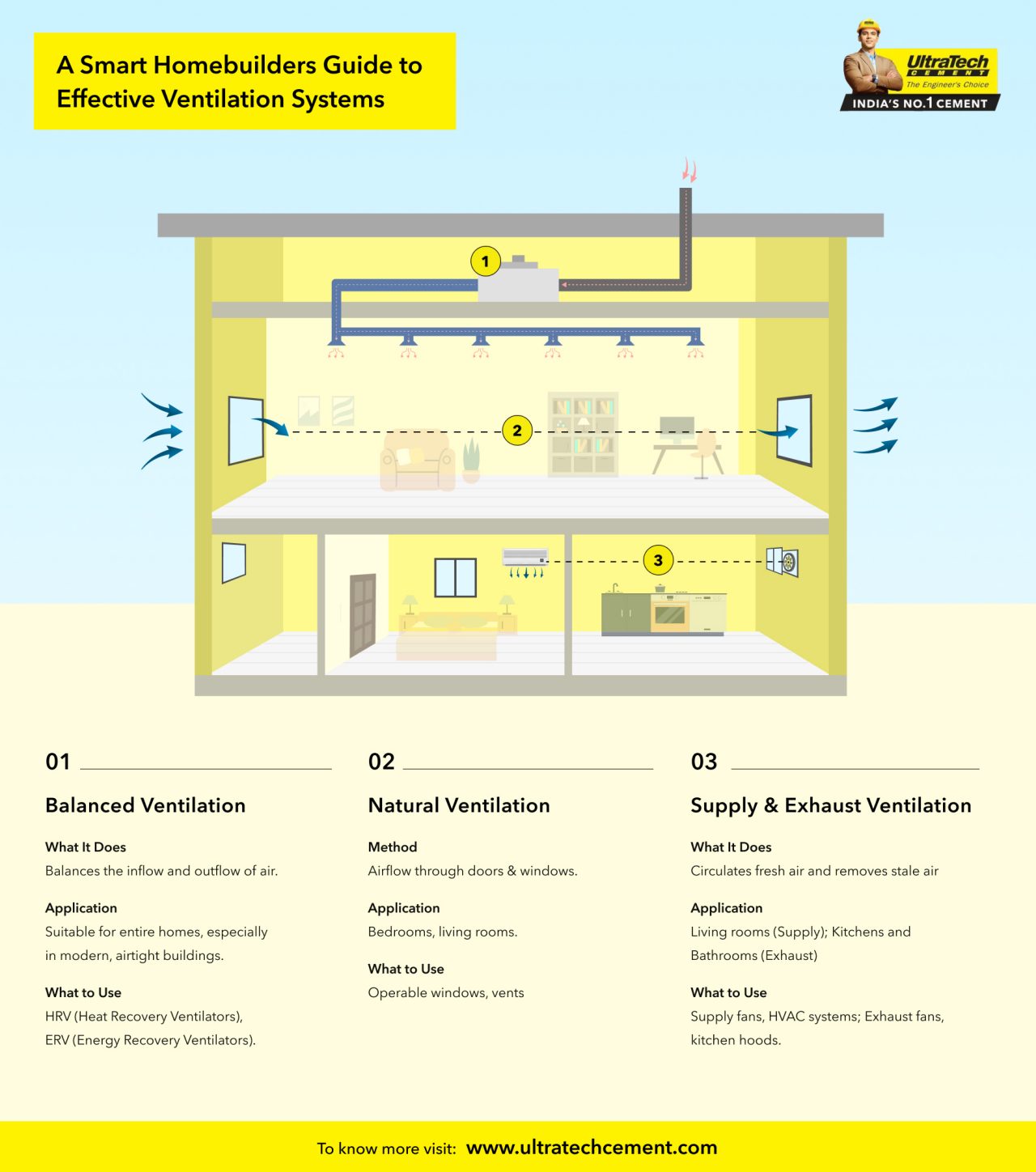Comprehending the Importance of Home Air Flow for a Healthier Living Atmosphere
Home ventilation plays a vital duty in preserving a healthy and balanced living environment. It facilitates the exchange of interior and outside air, which is essential for boosting air top quality. Without appropriate ventilation, homes can come to be reproducing premises for pollutants and irritants. The repercussions of poor air circulation can be significant. This raises the inquiry of just how homeowners can successfully carry out ventilation methods to protect their health and wellness and well-being. Recognizing these approaches is vital.

The Basics of Home Ventilation
Home ventilation offers as an important component of interior air high quality and convenience. It includes the procedure of trading stagnant indoor air with fresh outside air, thus reducing moisture and regulating temperature. Correct air flow systems can include natural approaches, such as open windows and vents, as well as mechanical systems, such as exhaust followers and air exchangers. Efficient home air flow assists stop concerns like indoor mold growth and the buildup of hazardous bits. It additionally enhances total energy efficiency, as well-ventilated spaces can preserve comfy temperature levels with less reliance on home heating and cooling systems. Understanding the basics of home air flow is crucial for home owners seeking to create a much healthier living atmosphere for themselves and their households.

Typical Resources of Indoor Air Air Pollution

Lots of might not recognize it, interior air contamination can originate from various sources within a household. Common factors include unpredictable organic substances (VOCs) sent out from paints, solvents, and cleansing products. Household appliances, such as gas cooktops and fireplaces, can release hazardous gases like carbon monoxide and nitrogen dioxide. Additionally, mold and mildew and mildew grow in wet areas, releasing spores that influence air high quality. Pet dander, allergen, and pollen can build up indoors, additional exacerbating contamination degrees. Smoking inside produces hazardous chemicals that linger in the air. Finally, developing products, consisting of asbestos and formaldehyde, can off-gas hazardous compounds. Acknowledging these resources is crucial for keeping a healthier indoor atmosphere and advertising efficient ventilation techniques.
Health And Wellness Effects of Poor Air Flow
Indoor air contamination can have significant health and wellness implications, especially when air flow is insufficient. Poor ventilation can cause the build-up of hazardous pollutants, such as volatile natural compounds, mold and mildew, and particle matter. This accumulation may cause breathing issues, consisting of asthma, allergies, and chronic obstructive lung condition. Individuals might experience symptoms like headaches, fatigue, and irritation of the eyes, nose, and throat. Prone populaces, such as children and the senior, go to greater threat for serious wellness effects. Long-term exposure to poorly ventilated atmospheres can also add to much more serious problems, including heart diseases. Guaranteeing correct ventilation is vital for preserving a healthy living setting and reducing the danger of health and wellness issues linked with interior air pollution.
Reliable Air Flow Methods for Your Home
Correct air flow is vital for preserving a healthy and balanced interior environment, and carrying out efficient methods can greatly improve air quality. Property owners can begin by making sure that exhaust followers are mounted in restrooms and kitchen areas to get rid of excess moisture and smells. Opening windows consistently permits fresh air to flow, especially during light weather condition. Furthermore, utilizing air purifiers with HEPA filters can aid record airborne contaminants. For homes with home heating and cooling systems, keeping heating and cooling systems and altering filters regularly is vital for peak efficiency. Incorporating natural ventilation strategies, such as cross-ventilation, can additionally boost air movement. Ultimately, securing any type of leaks in windows and doors protects against undesirable drafts, which can disrupt regulated air flow, inevitably leading to boosted indoor air high quality and comfort.
Preserving Optimal Air Quality Year-Round
To keep ideal air quality year-round, property owners need to embrace a proactive method to managing their interior setting. Routinely checking indoor air quality is important; this consists of checking for pollutants such as dust, mold, and unpredictable natural substances (VOCs) Applying reliable air flow systems, such as exhaust fans and air cleansers, can greatly minimize air-borne contaminants. Additionally, regular upkeep of a/c systems assurances peak performance and air circulation. Home owners should also consider moisture levels, as excessive dampness can bring about mold growth. Seasonal changes may demand adjustments in ventilation approaches to accommodate varying outside air top quality. By focusing on these practices, homeowners can develop a healthier space, promoting general well-being see post for all owners throughout the year.
Often Asked Inquiries
How Can I Inform if My Home Requirements Better Air Flow?
To figure out if a home calls click this site for better ventilation, one ought to observe indicators such as relentless humidity, mold and mildew development, stuffy odors, condensation on home windows, or boosted allergy symptoms, indicating insufficient air movement and possibly poor interior air top quality.
What Are the Indicators of Poor Indoor Air Quality?

Can Houseplants Improve Indoor Air Quality Efficiently?
The efficiency of houseplants in enhancing indoor air top quality is debated. While some studies recommend they can absorb contaminants and generate oxygen, their total influence might be marginal compared to proper ventilation and air purification systems.
How Usually Should I Adjustment My Air Filters?
The frequency of air filter changes generally depends upon use and filter type. Typically, it is recommended to replace filters every three months, though houses with pets or allergic reactions may require even more regular adjustments for ideal performance.
Are There Any Particular Ventilation Solutions for Allergy Sufferers?
Many air flow systems, such as HEPA-filtered units, properly lower irritants airborne. Home Ventilation Melbourne. These systems catch pet dog, dirt, and plant pollen dander, supplying allergic reaction victims with a cleaner, much healthier indoor environment while taking care of air quality effectively
It promotes the exchange of outdoor and indoor air, which is essential for improving air top quality. Home ventilation serves as a vital element of interior air high quality and comfort. It involves the procedure of exchanging stale indoor air with fresh exterior air, therefore lowering moisture and regulating temperature level. helpful resources Indoor air contamination can have significant wellness implications, particularly when ventilation is inadequate. Appropriate ventilation is necessary for maintaining a healthy interior setting, and executing efficient methods can considerably improve air top quality.